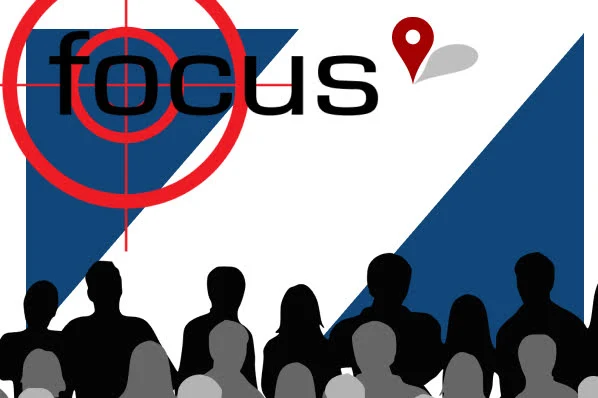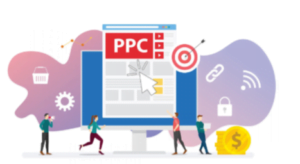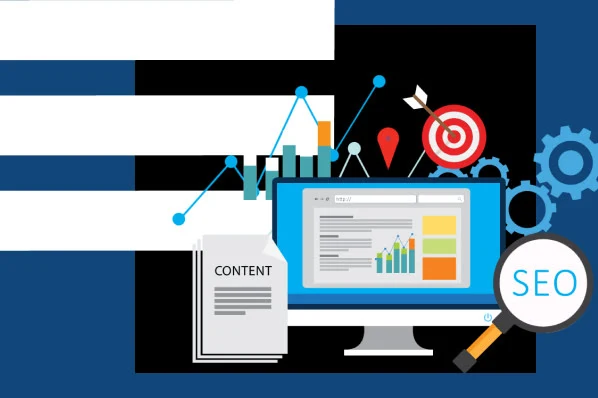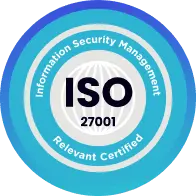While approximately 55% of small businesses engage in some form of online advertising, pay-per-click (PPC) remains a somewhat enigmatic concept for many. As a marketer, having proficiency in PPC is an invaluable asset or, at the very least, possessing a fundamental understanding is crucial.

So, what exactly is PPC?
Definition of PPC:
- Search Engine Marketing (SEM)
- CPC (Cost-per-click)
- CPM (Cost per Mille)
- Campaign
- Ad Group
- Keywords
- Ad Text
- Landing Page
PPC, short for pay-per-click, constitutes a form of advertising that involves paying a fee to secure placement for your website on search engine result pages (SERPs) when users input specific keywords or phrases into the search engine. The SERP then showcases the ads you’ve crafted to guide visitors to your site, with the fee contingent on the number of clicks your ad receives.
When executed effectively, PPC has the potential to yield high-quality leads. When combined with the creation of a seamless user journey (which we’ll delve into later in this article), it can result in a substantial return on investment (ROI) for your PPC endeavors.
Pay-per-click advertising primarily thrives within search engine results pages, including platforms like Google or Bing, although it also extends its reach into social media channels (though cost per thousand impressions or CPM tends to be more prevalent there).
Curious about where you can spot PPC ads? Look no further than the results displayed prominently before and to the right of the organic search results.
Now, let’s break down some PPC terms and definitions:
1.Search Engine Marketing (SEM): The overarching goal of all digital advertising forms is to rank for a specific target keyword, achievable through various approaches. SEM encompasses all digital marketing activities, both paid and organic, conducted on search engines such as Google, Yahoo, or Bing. It’s essential to remember that PPC isn’t confined to search engines alone; social media platforms like Facebook also embrace PPC advertising.
2.CPC (Cost-per-click): CPC represents the sum an advertiser pays for each click on their ad. It functions as your bid in an auction that determines the placement of your ad. A higher bid typically leads to more favorable ad placement. You set your CPC as the maximum price you’re willing to pay per click on your ad. The actual CPC you incur follows this formula: (Competitor’s Ad Rank / Your Quality Score) + 0.01. It’s essential to understand the elements within this equation:

- Ad Rank: This figure dictates the position of an ad on a search engine results page and is equal to Maximum Bid x Quality Score.
- Quality Score: Search engines assign this score to your ad based on factors like your click through rate (CTR), relevance of keywords, landing page quality, and past performance on SERPs.
- Maximum Bid: This represents the highest amount you’re willing to pay for a single click on your ad. You can opt for manual CPC, where you set the maximum bid yourself, or enhanced CPC, allowing search engines to adjust your bid based on your objectives. Enhanced options include bid strategies that automatically adapt bids based on clicks or conversions.
3.CPM (Cost per Mille): CPM, also known as cost per thousand, denotes the cost for one thousand impressions. It’s most commonly utilized for paid social and display ads. While other cost-per metrics like cost-per-engagement and cost-per-acquisition exist, for simplicity’s sake, we’ll focus on clicks, i.e., CPC.
4.Campaign: In establishing your PPC ads, the initial step entails defining your ad campaign. Think of your campaign as the core message or theme you aim to convey through your advertisements.
5.Ad Group: A one-size-fits-all approach doesn’t apply here. Instead, within your campaign, you create multiple ad groups centered around closely related keywords. Each ad group can have its CPC set.
6.Keywords: Each ad within an ad group targets a set of pertinent keywords or key terms. These keywords signal to search engines the terms or queries for which you want your ad to appear alongside in SERPs. Once you identify the most effective keywords, you can establish micro CPCs tailored to specific keywords within your ads.
7.Ad Text: Your choice of keywords should heavily influence the content of your ad text. Keep in mind that your Quality Score hinges on the relevance of your ad, so the text in your ad (and the associated landing page) should align with the targeted keyword terms.
8.Landing Page: The landing page is a critical component of your paid advertising strategy. It’s where users land once they click on your PPC ad, whether it’s a dedicated webpage, your homepage, or another destination. Adhering to best practices for landing pages is essential to maximize conversions.
Advantages of PPC Advertising

- Budget-Friendly Campaigns
When it comes to PPC advertising, you’re the master of your budget. You have the power to determine exactly how much you’re willing to spend on your campaigns. This cost-effective approach ensures that you only pay when users click on your ads, offering a high potential for conversions and delivering optimal value for your investment.
- Swift Results
While organic search rankings are valuable, the journey to securing a prime spot on the search engine results pages (SERPs) can be a long and arduous one, taking months or even years. For startups and small businesses seeking immediate visibility, PPC ads are the answer. With well-optimized PPC campaigns, you can skyrocket to the top of the SERPs within hours of launching your campaign, ensuring rapid exposure.
- Precise Control and Testing
PPC advertising empowers you with precise control over your ad campaigns. You can dictate the keywords you target, your ad placements, and your budget allocation. Additionally, conducting A/B split tests with different ad variations allows you to identify the most effective ones, maximizing your return on investment. Scaling successful ads is straightforward until they no longer meet your desired outcomes.
- Targeting Your Ideal Audience
With PPC ads, you can skip the cold audience phase and directly engage with a warm audience ready to engage with your products or services. By bidding on keywords that align with solution-aware buyer personas, you can connect with the right users. Beyond keywords, PPC offers targeting options based on users’ past online behaviors and demographics. Furthermore, you can employ retargeting campaigns to re-engage visitors who previously didn’t convert on your site.
- Insulation from Algorithm Changes
Search engine algorithms are constantly evolving, making it challenging to rely solely on organic traffic. In contrast, PPC advertising remains stable in the face of algorithmic shifts. Instead of fretting about search engine updates, you can focus on optimizing and fine-tuning your PPC campaigns for superior performance.
- Leveling the Playing Field
In today’s competitive digital landscape, keywords have become battlegrounds, making it tough for businesses with low domain authority to secure top rankings. PPC advertising levels the playing field, allowing you to swiftly rank for keywords relevant to your audience, regardless of your domain rating.
- Informing Your SEO Strategy
While PPC advertising doesn’t replace your SEO efforts, it can significantly complement them. Data gathered from PPC campaigns can provide valuable insights that inform and enhance your SEO strategy. By aligning your paid advertising with your SEO efforts, you can create a well-rounded digital marketing strategy that maximizes your online presence and drives results.
Our “Mastering PPC Strategies for Ecommerce Success” will help you learn more about the world of PPC.
Mastering PPC Strategies for Ecommerce Success
Why Does Ecommerce Thrive on PPC Advertising?

In today’s digital landscape, the realm of online product searches, particularly on Google, is experiencing an unprecedented boom. As a result, a growing number of ecommerce businesses are directing their attention and resources toward Pay-Per-Click (PPC) advertising. A remarkable statistic from Q4 of 2018 reveals that spending on Google Shopping ads surged by a staggering 43%.
While Amazon still commands a significant share of customers’ initial product searches, Google is not far behind in the race. According to insights from Wordstream, the average consumer makes a purchase within 20 days of searching for a product on Google, and within 26 days of conducting a similar search on Amazon. Furthermore, their research indicates that a substantial 35% of users make a purchase within a mere 5 days following their Google search.
For ecommerce marketers, the competitive landscape can be challenging, but there are strategies that can give you an edge without breaking the bank. Here are five actionable tips to optimize your Ecommerce PPC campaigns:
- Strike a Balance Between Broad and Ultra-Specific Keywords: Imagine you run a business specializing in tires and rims. Picture a scenario where customers walk into your store with varying levels of product knowledge. Some are in the early stages of research, unsure about brand preferences or the tire size they require. Others arrive armed with precise details, such as model numbers.
Much like this scenario, in the world of ecommerce, bidding on highly competitive keywords can be akin to an expensive battleground. Users may click on multiple ads, conduct research on your site, and ultimately choose the seller with the lowest price. To offset this, consider targeting specific, less competitive keywords, like model numbers, part names, or UPC codes. While search volumes for such granular terms may be lower, the cost per click is also significantly reduced, and conversion rates tend to be higher. This strategic shift can contribute to a lower overall Cost Per Acquisition (CPA) and enable you to guide customers directly to a relevant product page.
- Harness the Power of Long-Tail Keywords: Some customers may possess a wealth of product knowledge but haven’t reached the stage of entering ultra-specific codes or names. They are likely to use long-tail keywords, such as “red capri pants in petite” or “Red Sox bleacher seats.” Dive into your Search Query Report within the Google Ads interface to uncover these valuable long-tail keywords. Identify those that have resulted in conversions, incorporating them into relevant ad groups and bidding aggressively on them. Think of broad keywords as casting a wide net; while they capture a broad audience, mining data for converting keywords and long-tail opportunities is essential to unearth hidden gems.
- Bid on Competitor-Related Keywords: In addition to targeting users looking for specific products, don’t overlook potential customers who are actively considering your competitors. Many individuals may be exploring alternatives even after hearing about a specific brand. Imagine the physical shopping world, where shoppers may walk into a neighboring store enticed by better prices and selections. By creating campaigns targeting competitor-related keywords, you can raise awareness that your offerings are both an alternative and an affordable choice.
 Exercise Caution with Competitors’ Branded Keywords: While targeting competitor-related keywords can be a strategic move, it’s crucial to avoid targeting their branded keywords. Doing so can lead to several undesirable outcomes, such as paying for less qualified traffic, inviting bidding wars, potential repercussions from competitors or platforms like Google, and harming your reputation. Instead, draw inspiration from your competitors’ PPC ads to inform your own strategy. For instance, if a competitor is bidding on keywords crucial to your business, consider establishing a paid presence for those terms. Alternatively, if competitors dominate organic search results, PPC can serve as a valuable short-term solution to capture traffic.
Exercise Caution with Competitors’ Branded Keywords: While targeting competitor-related keywords can be a strategic move, it’s crucial to avoid targeting their branded keywords. Doing so can lead to several undesirable outcomes, such as paying for less qualified traffic, inviting bidding wars, potential repercussions from competitors or platforms like Google, and harming your reputation. Instead, draw inspiration from your competitors’ PPC ads to inform your own strategy. For instance, if a competitor is bidding on keywords crucial to your business, consider establishing a paid presence for those terms. Alternatively, if competitors dominate organic search results, PPC can serve as a valuable short-term solution to capture traffic.- Embrace Transparency with Pricing: In a world of limited characters for text ads and escalating click costs, qualifying your traffic before users click your ad is paramount. While targeting specific keywords helps, there’s only so much you can discern from someone using general terms. However, you can prequalify potential customers by including pricing information in your ads. By doing so, you can deter individuals whose budgets don’t align with your product prices, ensuring that your ad spend is focused on more qualified leads who are aware of your pricing structure, less likely to be deterred by costs, and more inclined to convert into sales.
In the competitive realm of ecommerce, mastering the art of PPC advertising can be a game-changer. Implementing these strategies can help you navigate the digital landscape more effectively, reaching the right audience and maximizing the return on your advertising investments.
Author
-

Saisha is an experienced SEO publisher with extensive experience in digital marketing. She received her education in the field of Marketing in University of Michigan, which laid a solid foundation for a successful career in online marketing.Over time, Sasha has expanded her experience working with clients in various sectors, from small businesses to large enterprises. She is not only a professional in the field of SEO publications, but also actively participates in the exchange of knowledge in the marketing community.
View all posts







